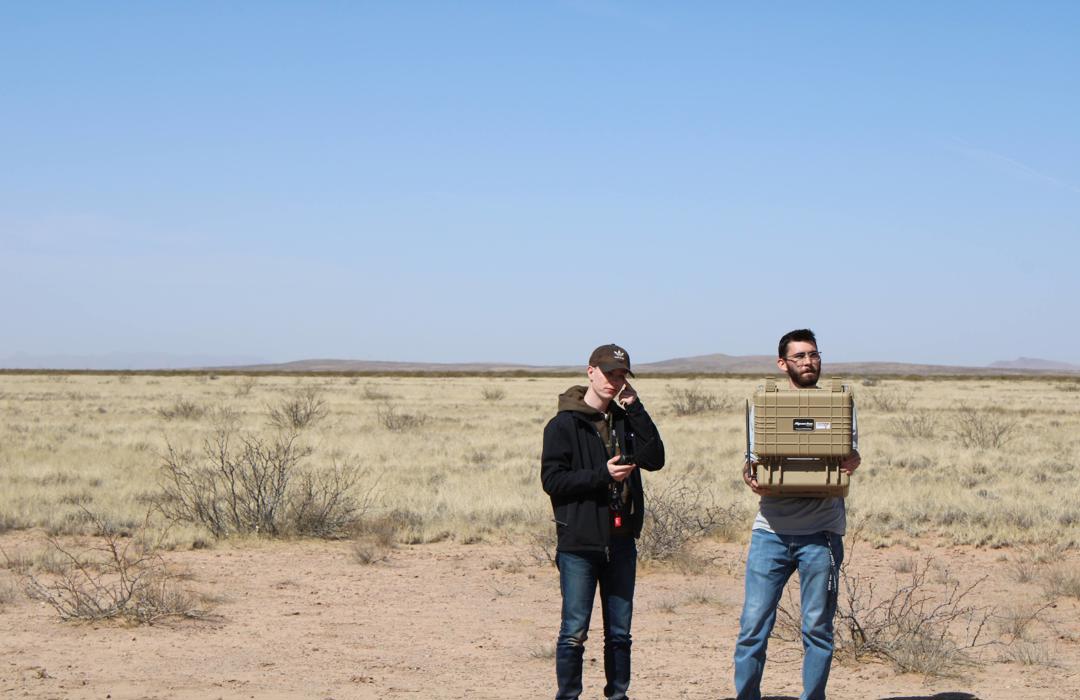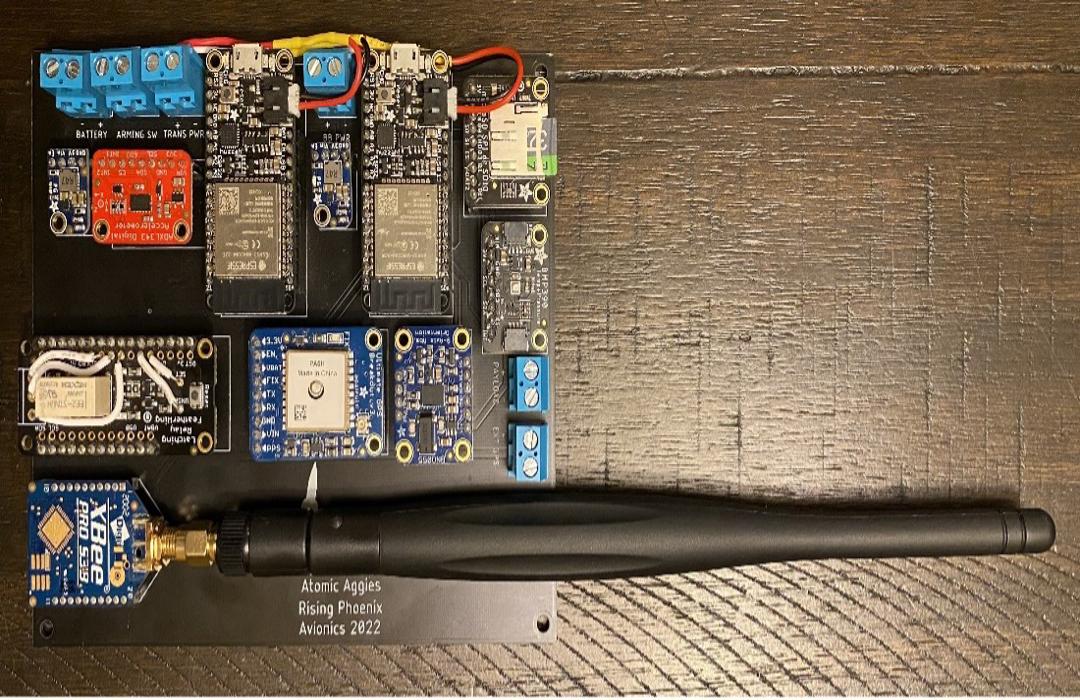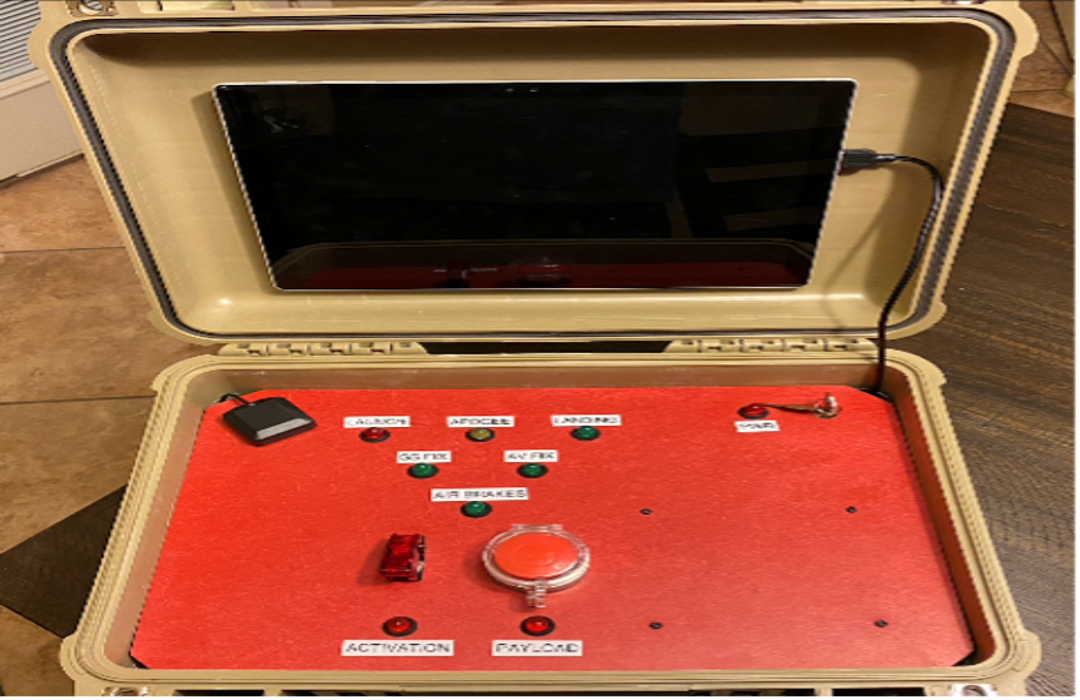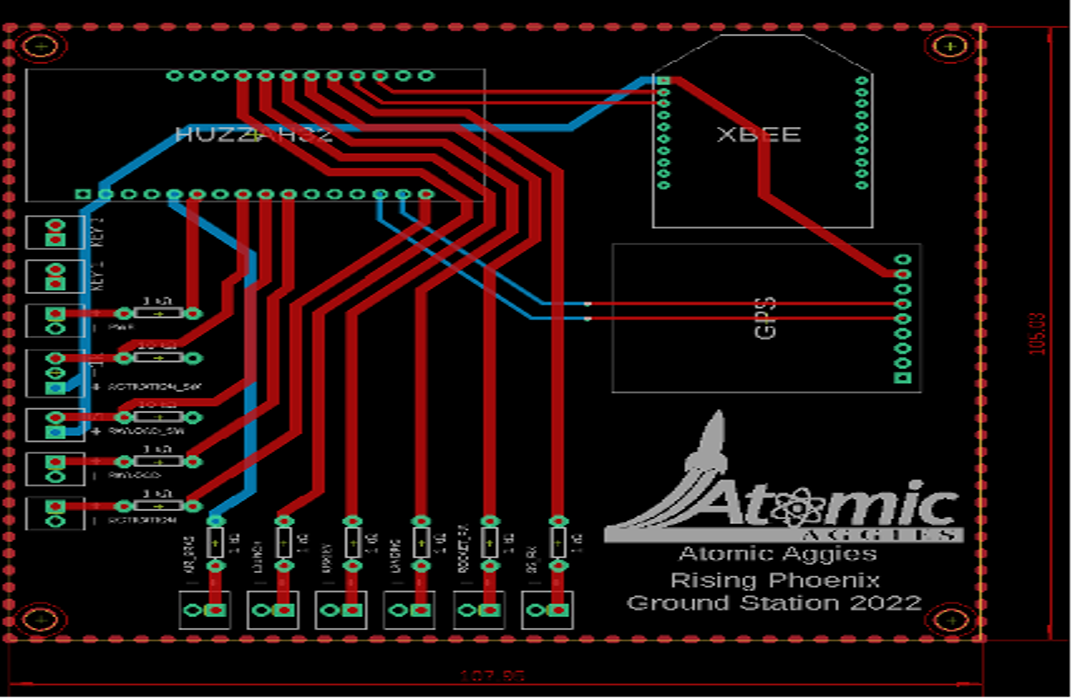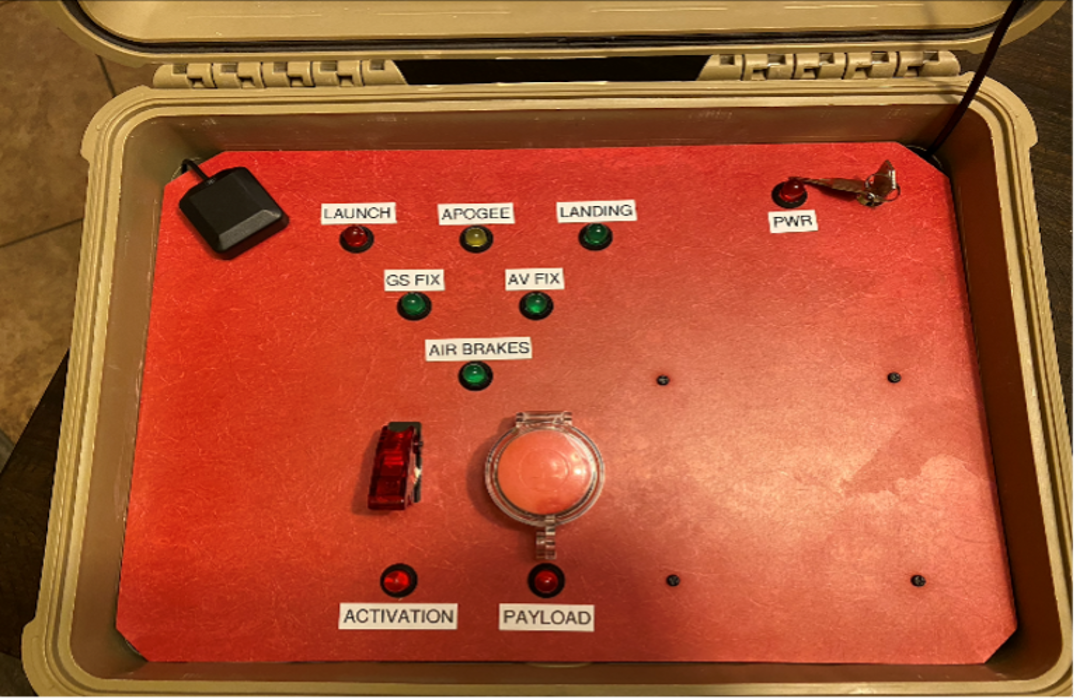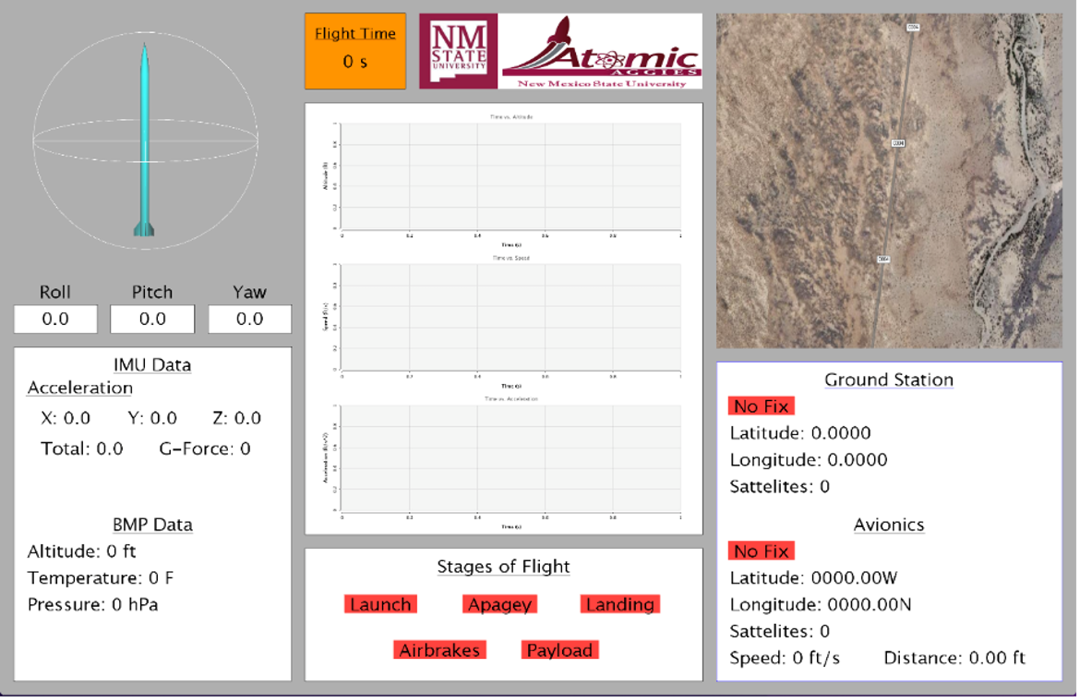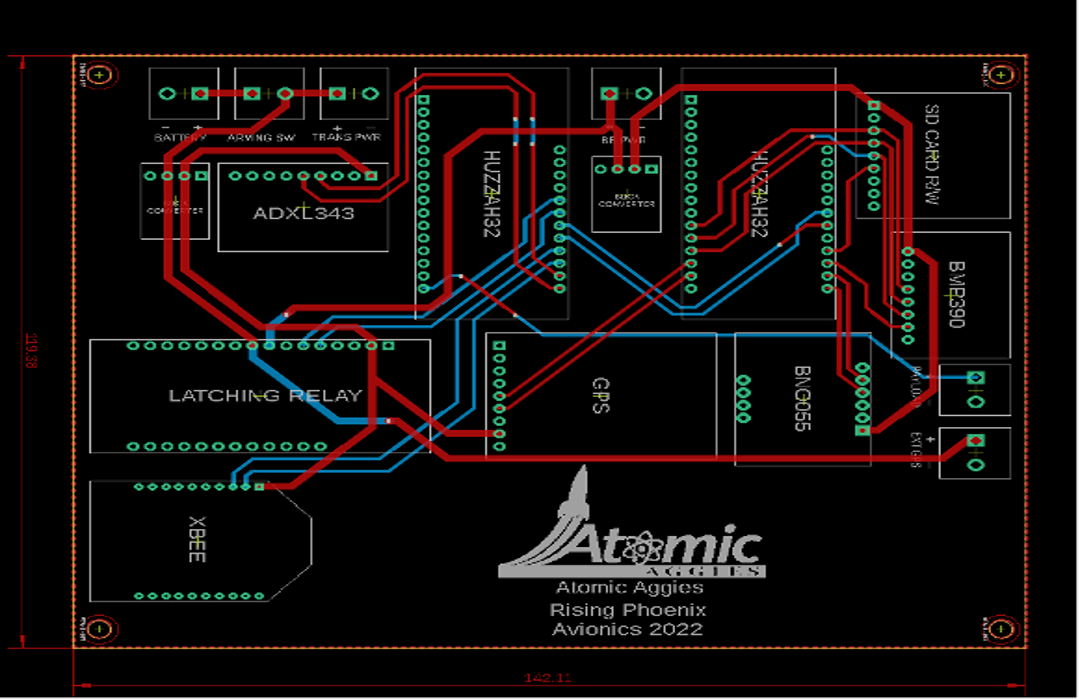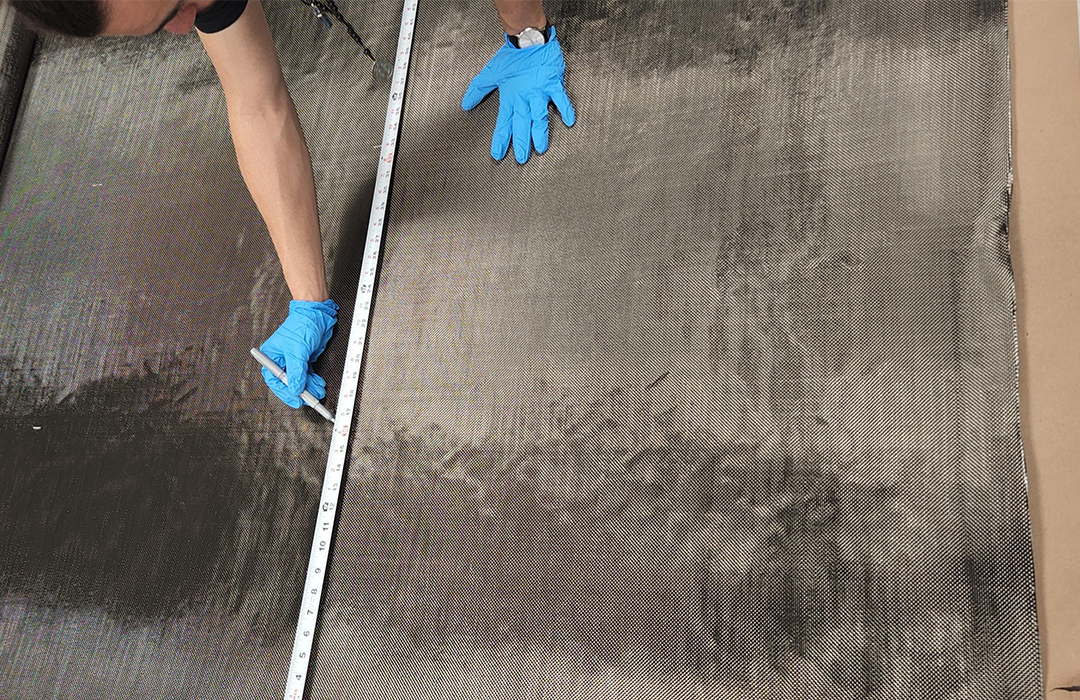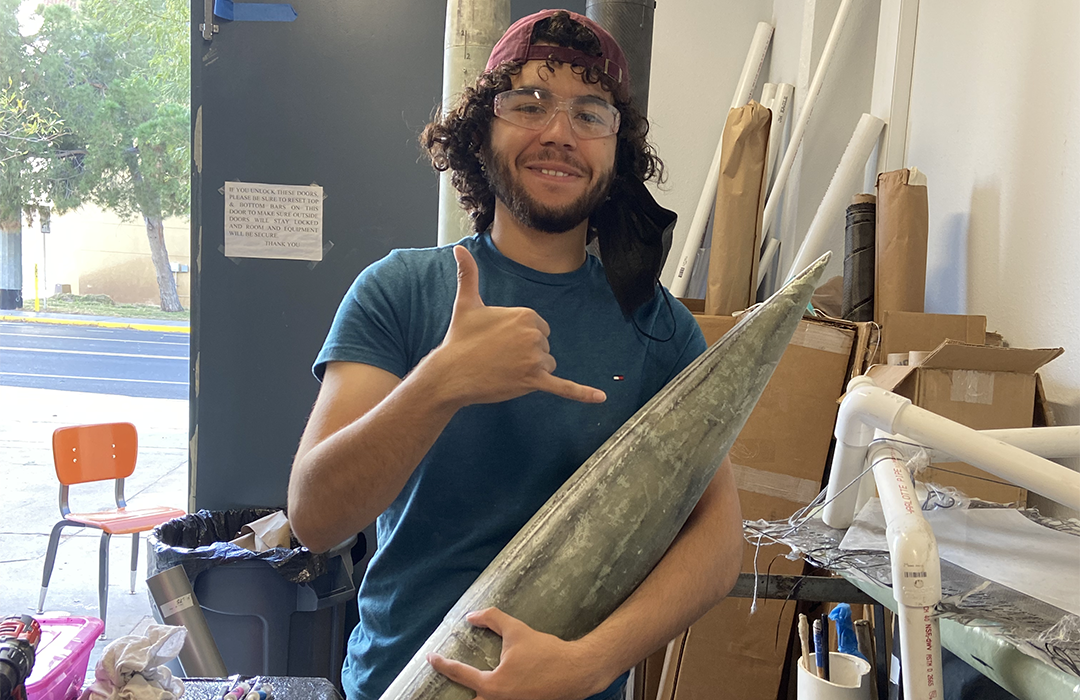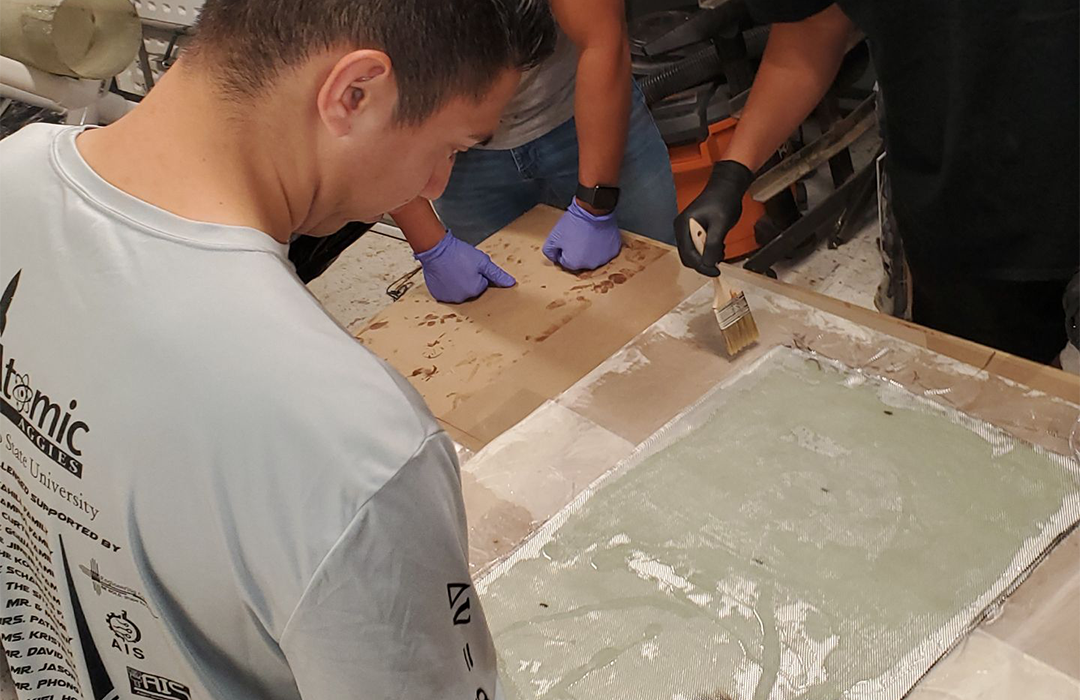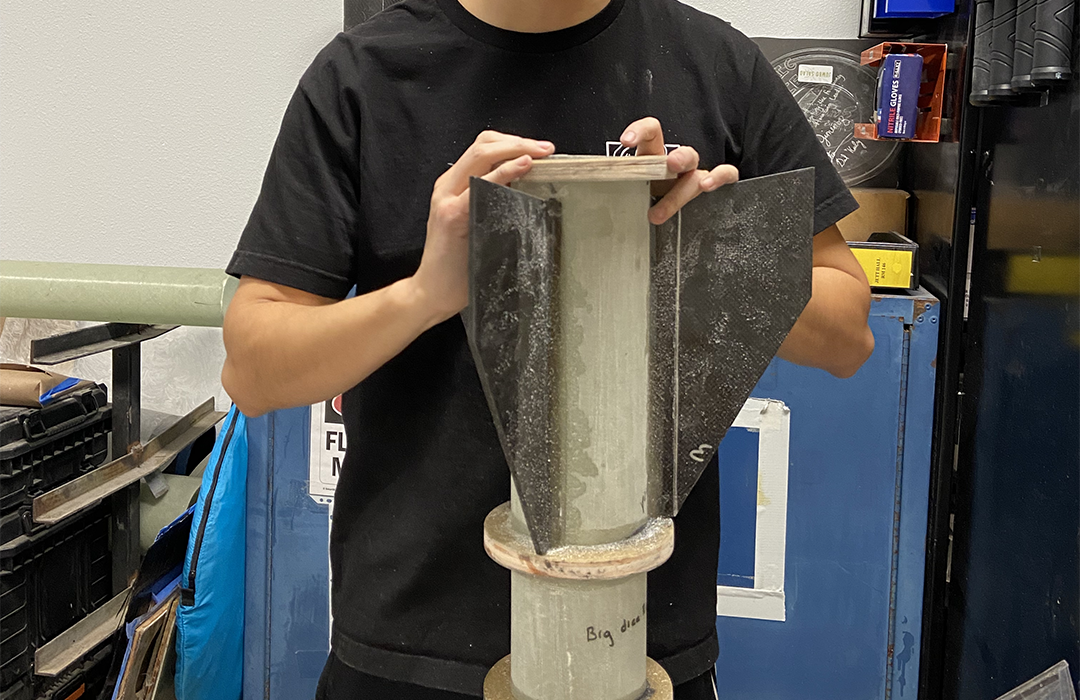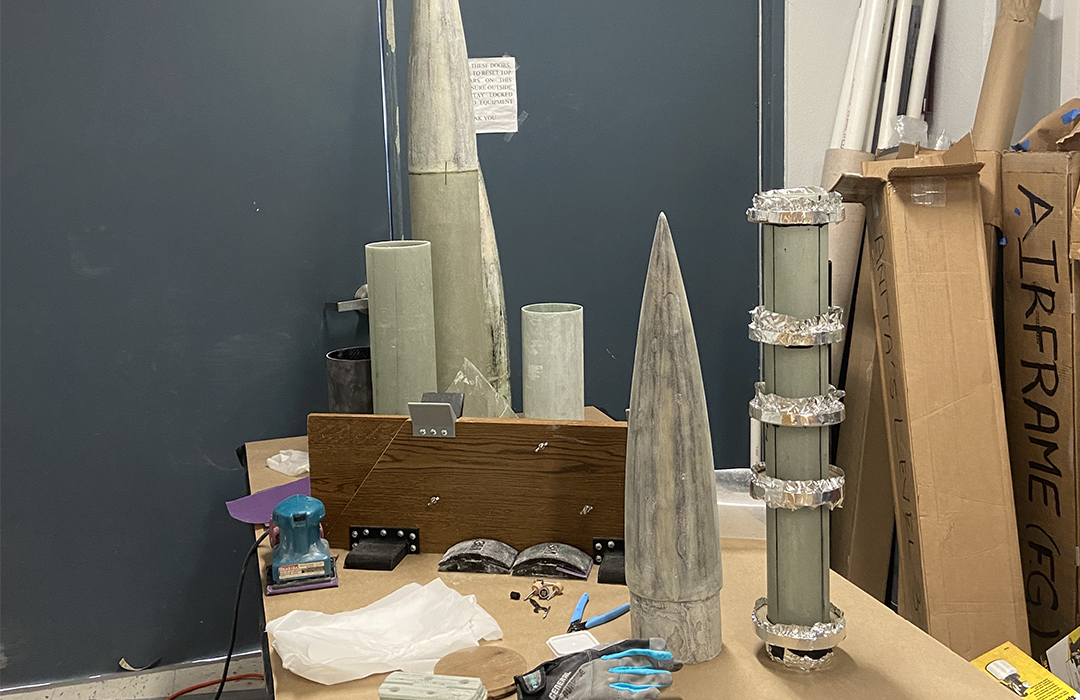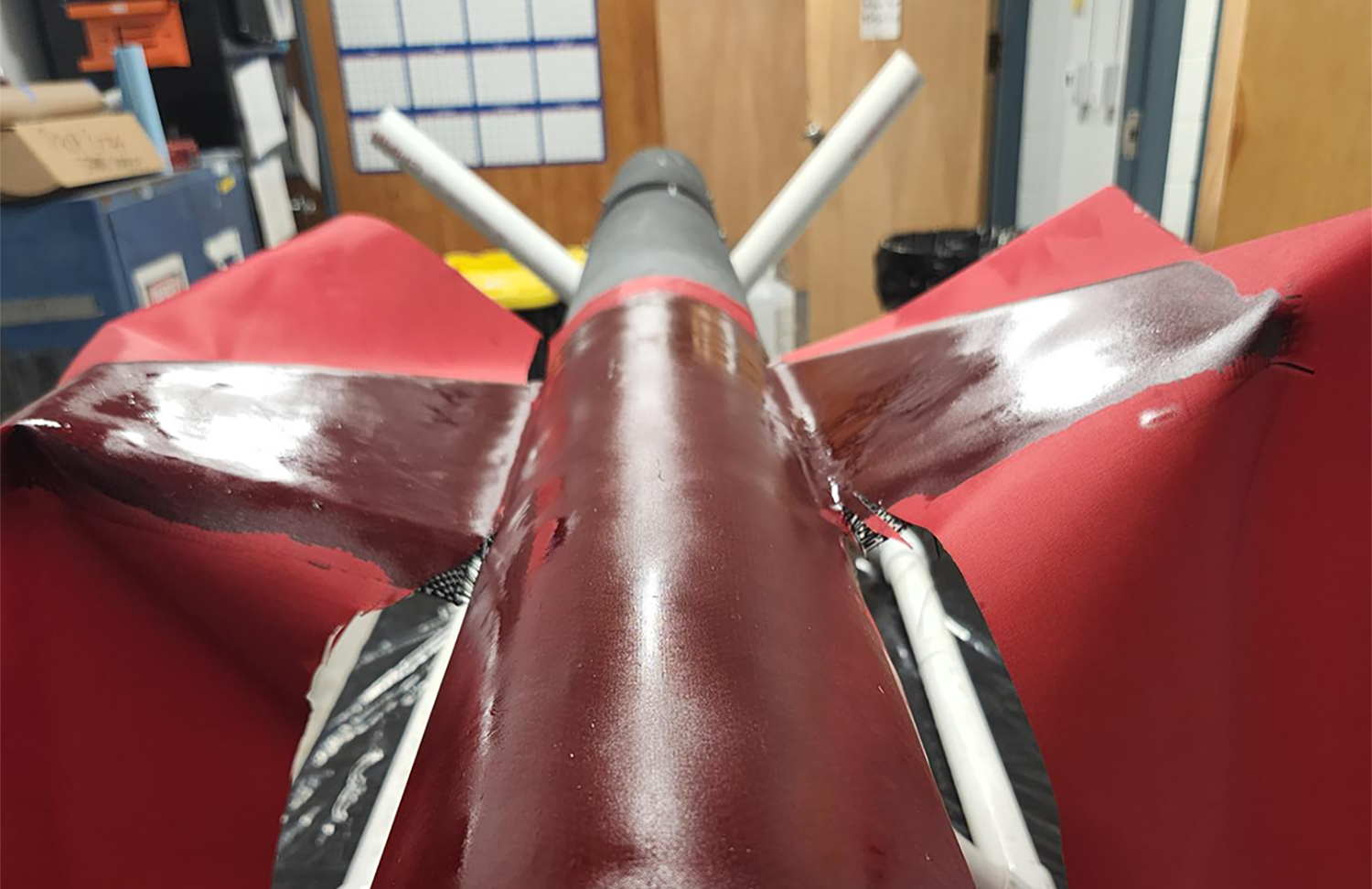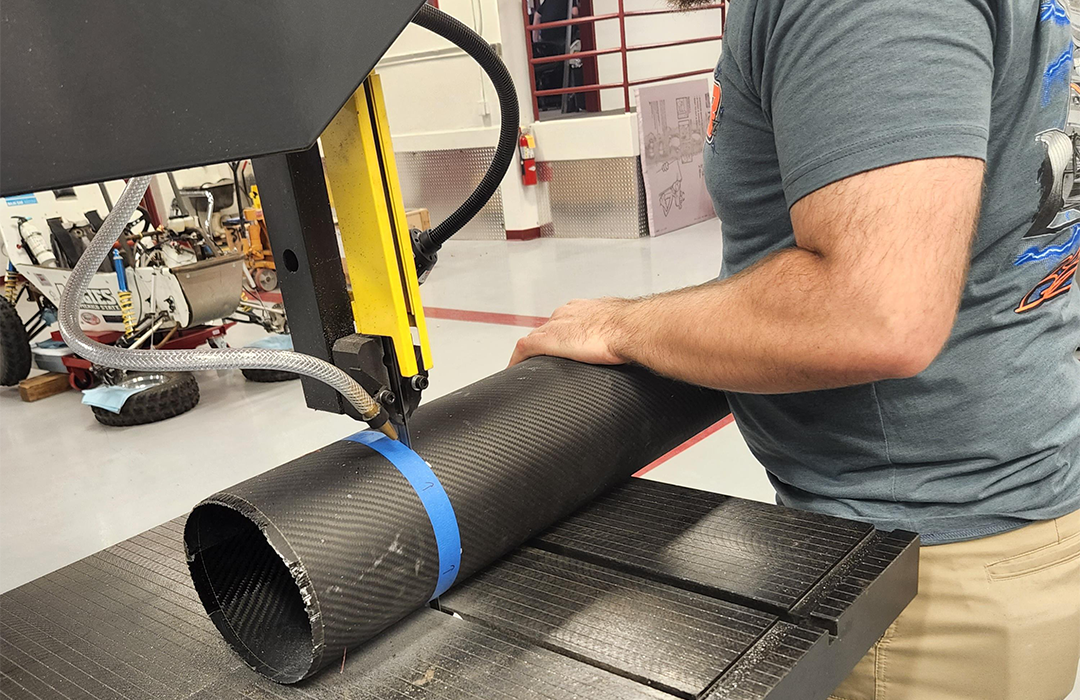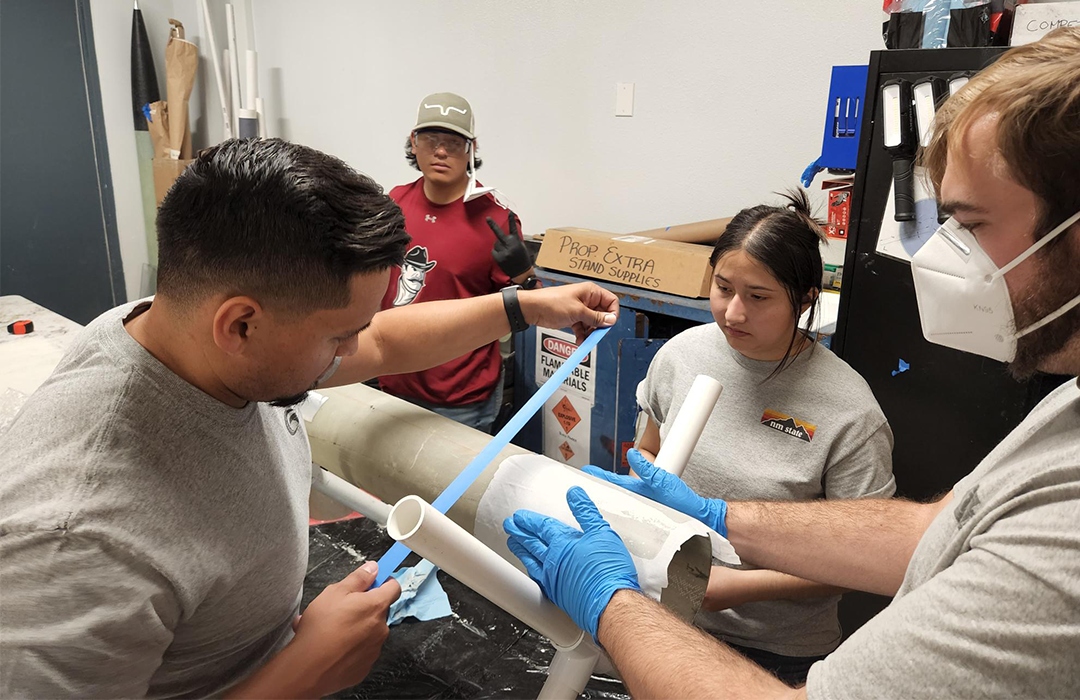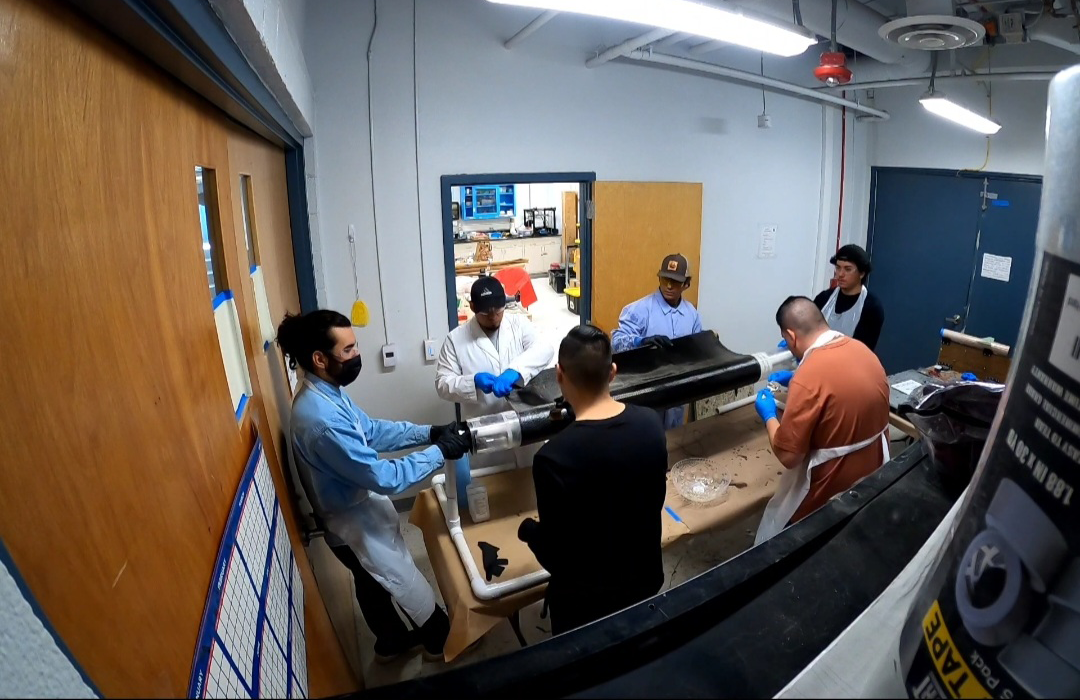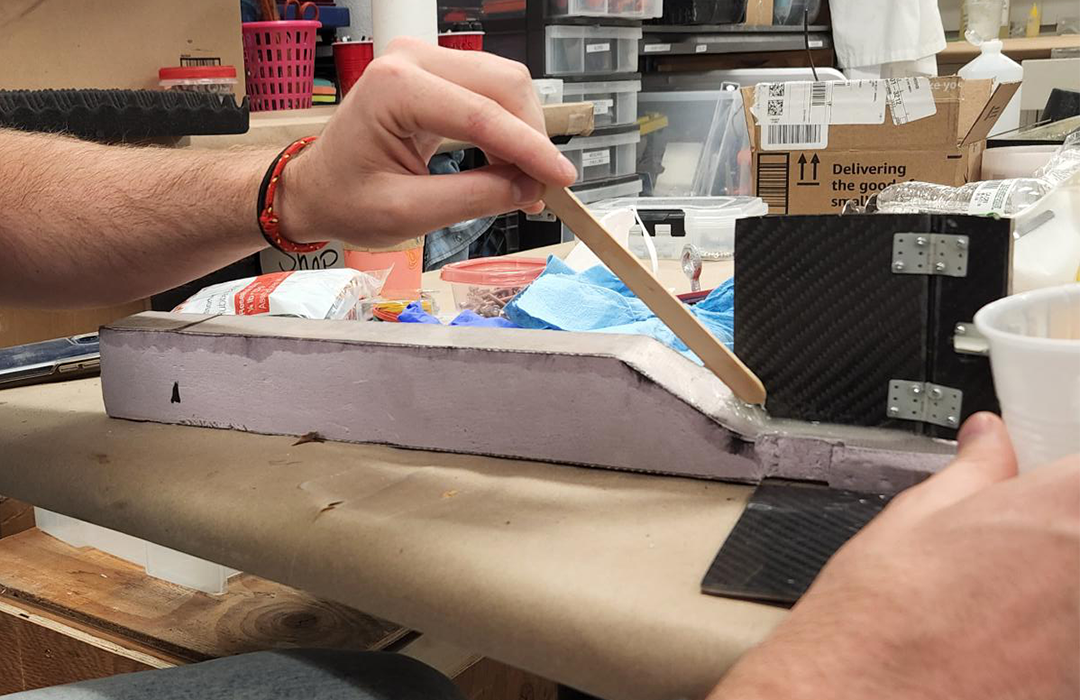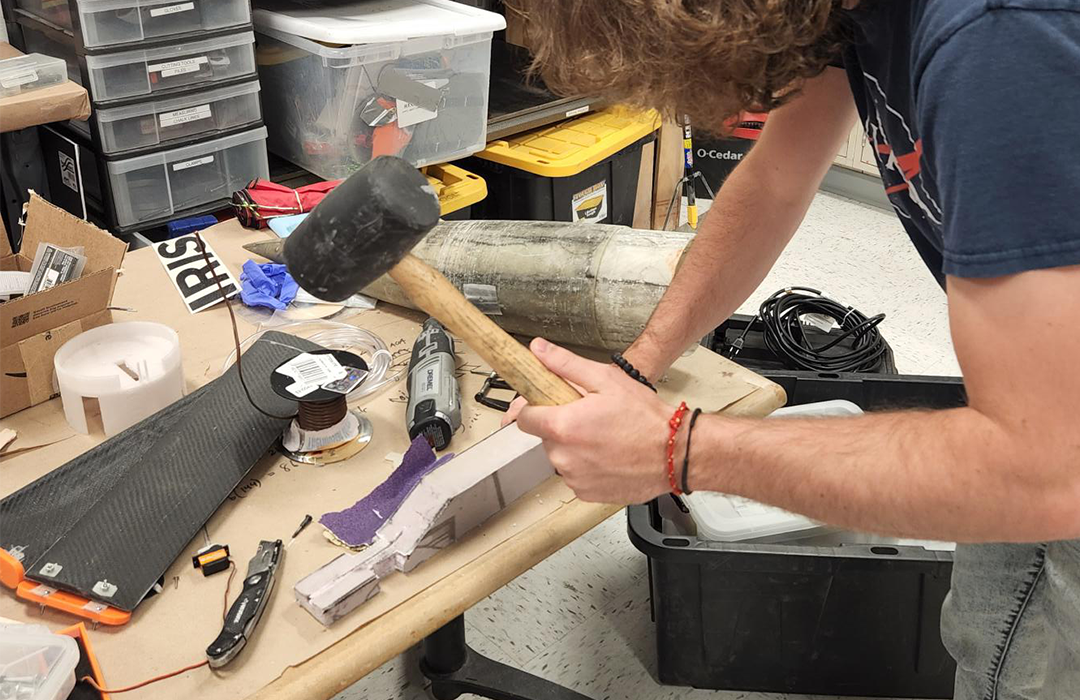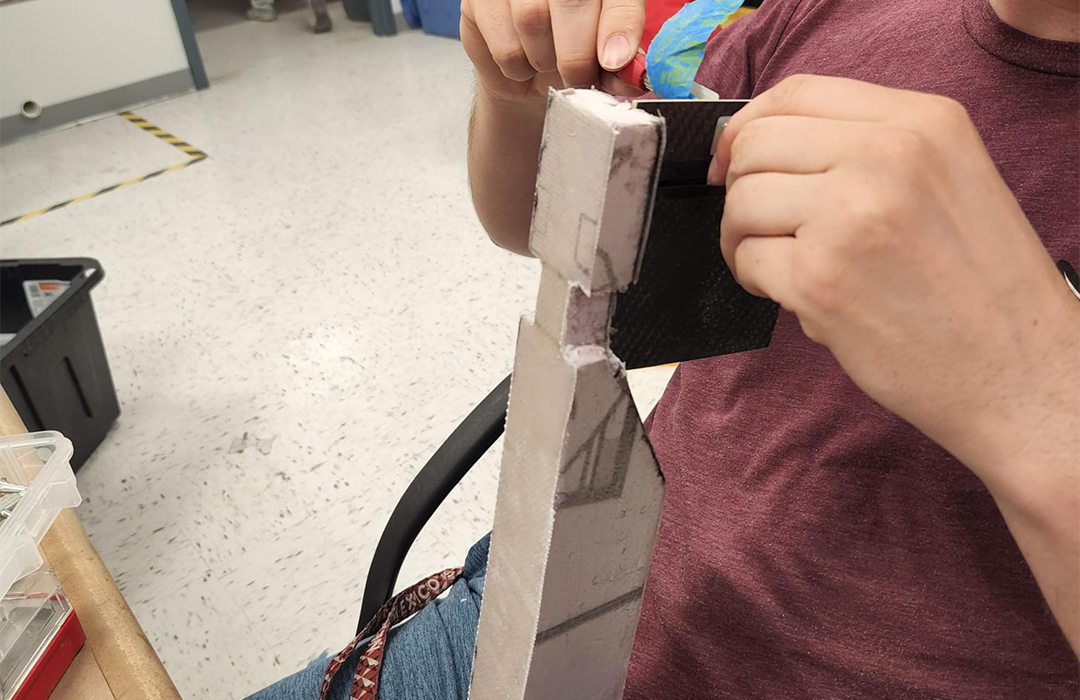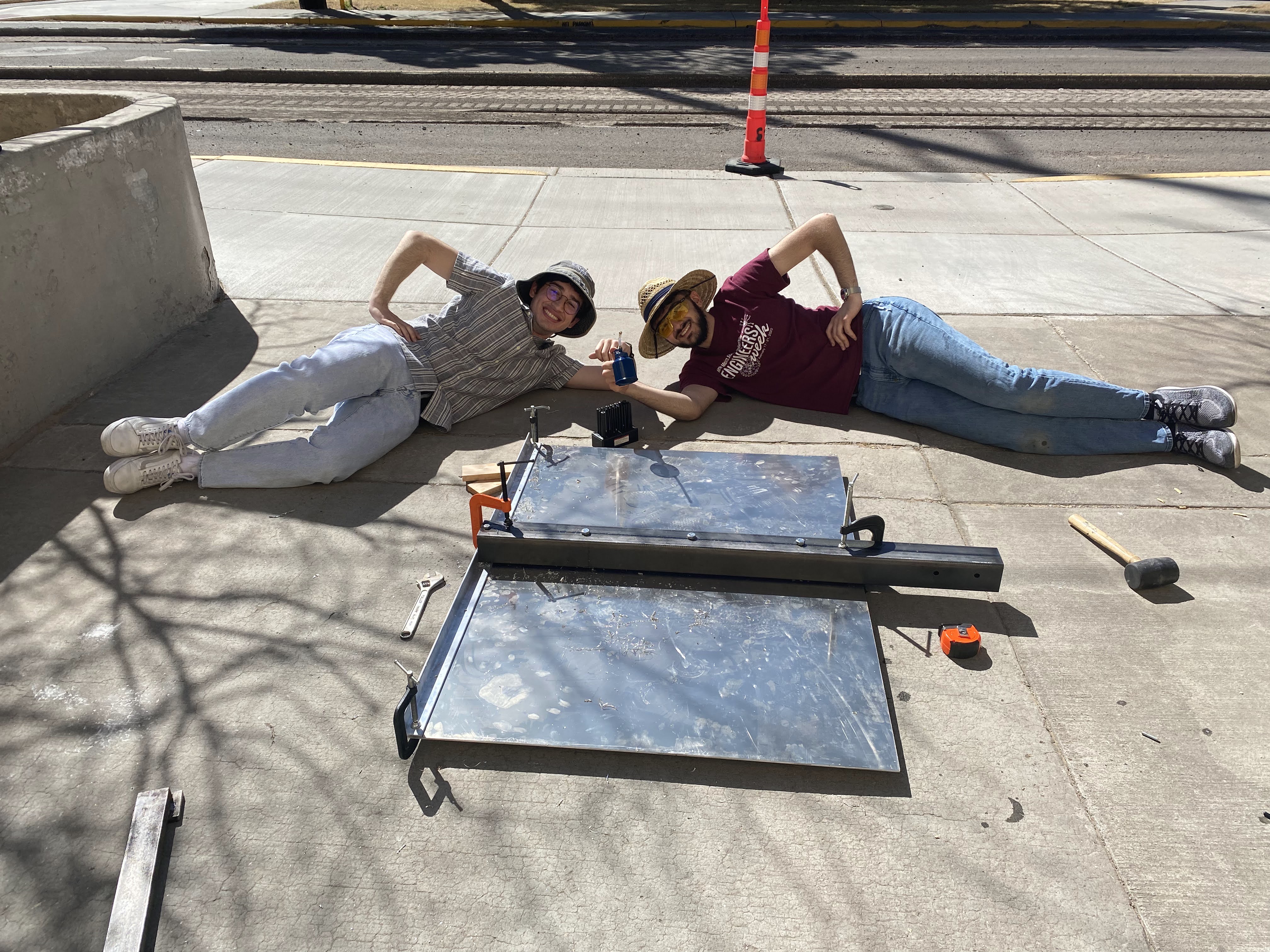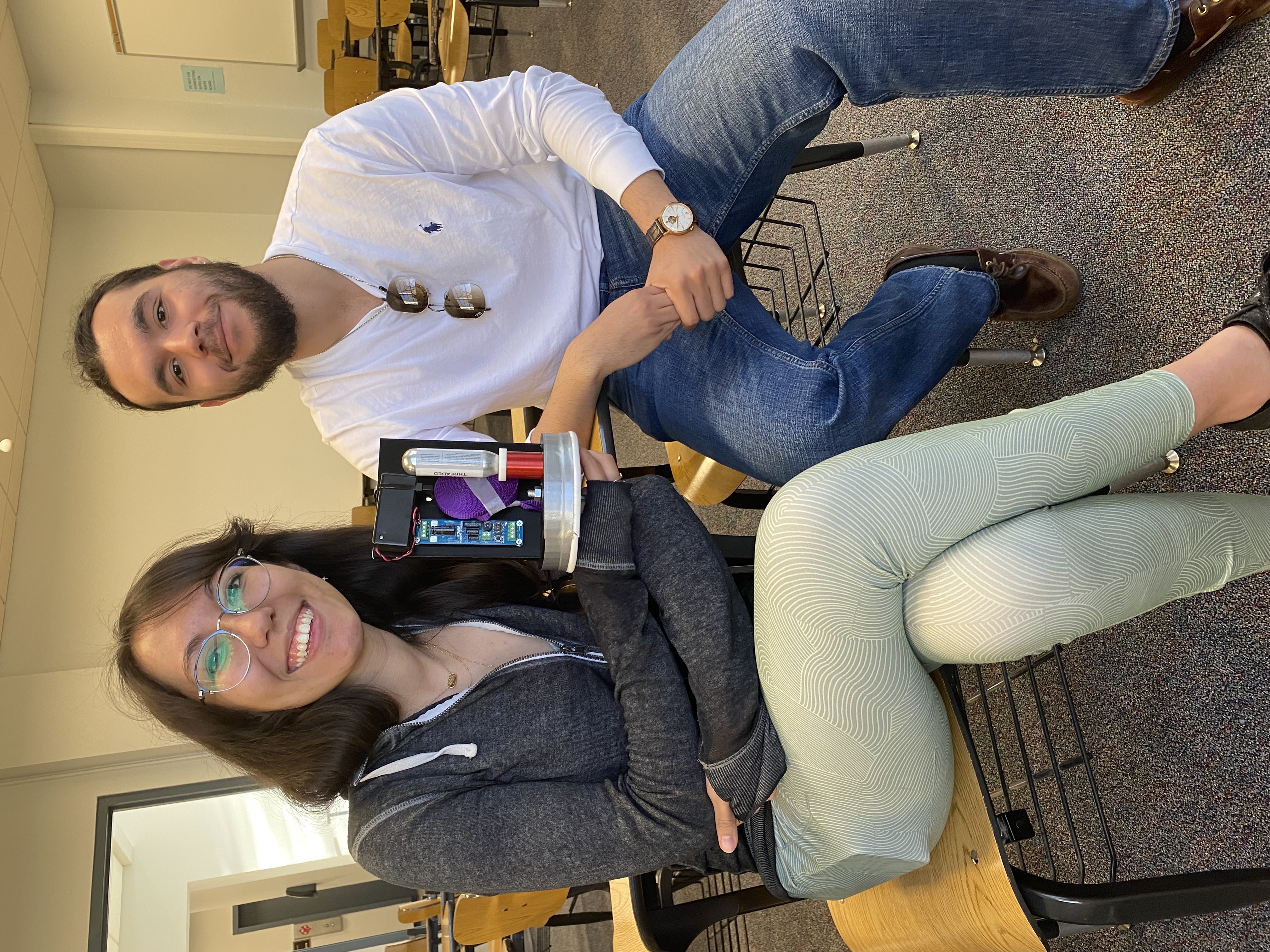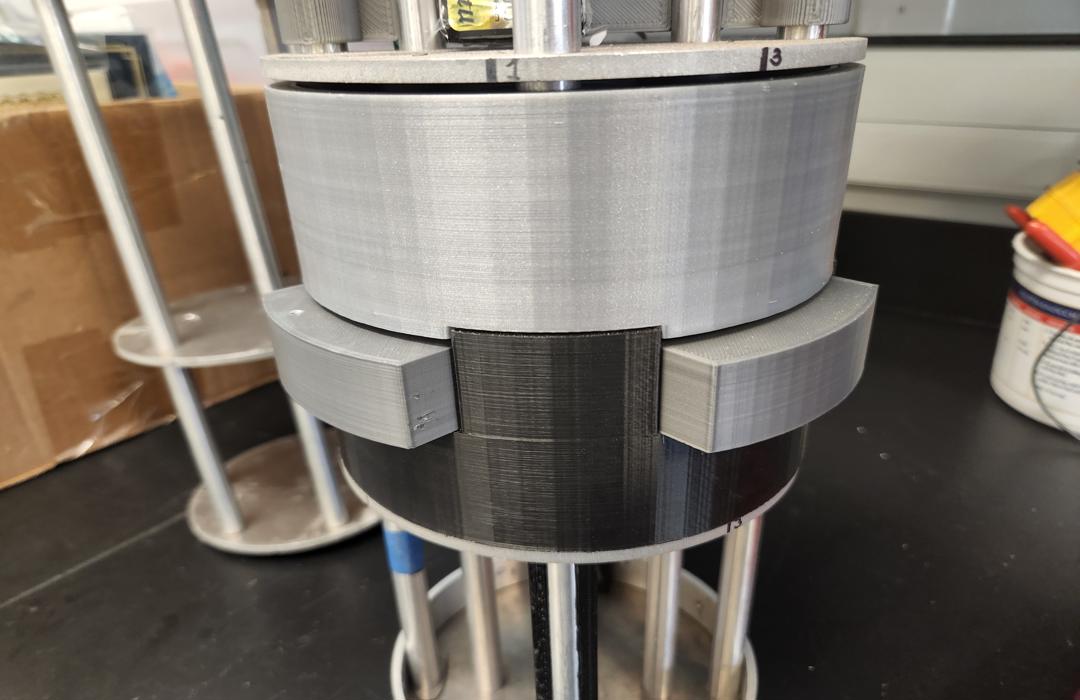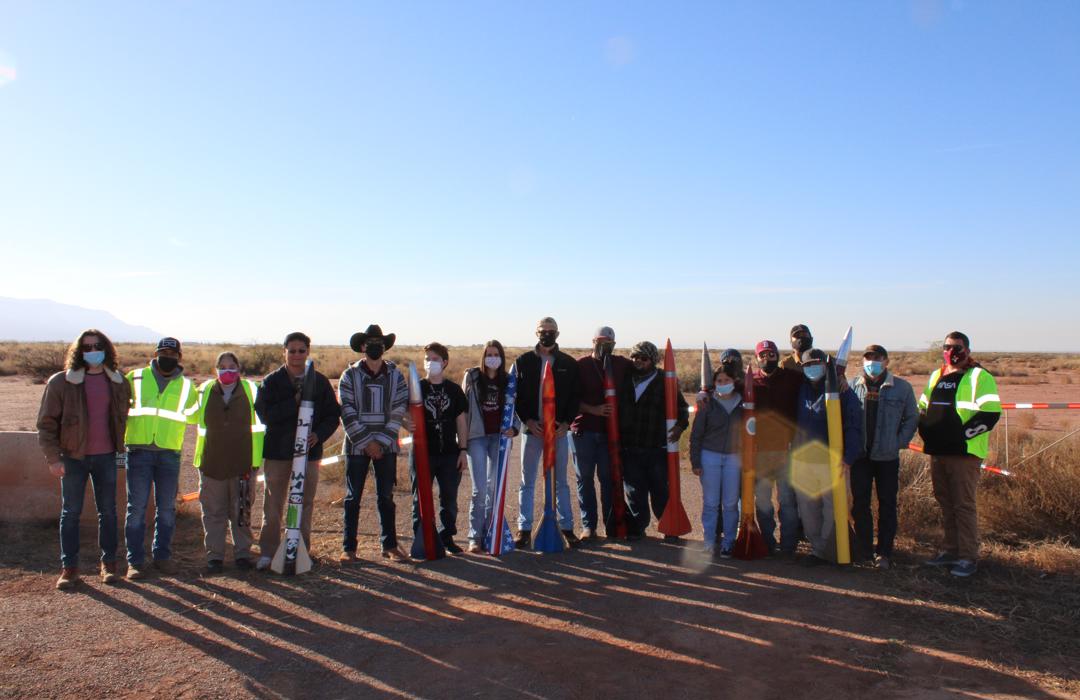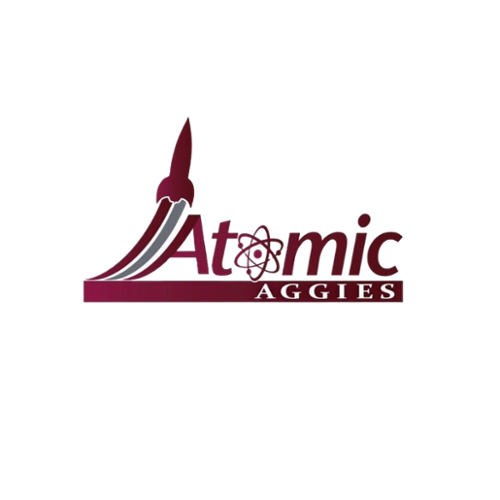Avionics
This sub-team is in charge of designing and manufacturing a GPS system for the competition rocket. This system will pinpoint the velocity, altitude, parachute deployments, direction, and location of the rocket. This sub-team is tailored for Electrical Engineering undergraduates and Computer Science undergraduates as it does involve a lot of electrical circuits and coding. Although, anyone is welcome to join this group!
This year, the Avionics group created a Guided User Interface (GUI) system that is housed in one mobile and sturdy case. This system helps display the velocity, altitude, direction, and location of the rocket. Along with that, the system will also let us know when our payload has been deployed as well!
If you have an interest in coding and electronics, this is the team for you!
Contact our Avionics lead: Mathew Montoya at mmmatt15@nmsu.edu
Manufacturing
Atomic Aggies' manufacturing team fabricates airframe components from "raw" carbon fiber and fiberglass. This is done by using molds to form the material into some components and laying out multiple layers to create "plates". Once every component is up to the team's standard, this sub-team manufactures and assembles all the components together to complete the rocket!
Along with fabricating and manufacturing airframe components, this team also works with other sub-teams in assisting them in any projects they work on. From creating CAD and dxf files to waterjet components to helping assemble different systems, this team works on all parts of the rocket.
If you don't mind getting your hands dirty, this sub-team is the perfect place for you!
Email our Manufacturing lead: Sammy Diaz at sammy126@nmsu.edu
Payload
This sub-team is in charge of creating a payload that will sit inside the rocket during flight. The payload changes every year, and every payload comes with different challenges and goals. The payload has ranged from CubeSats to aerial vehicles. This sub-team plays a very important role in our competition goals.
This year, the rocket's payload is a programmable rover that will drive out of the rover after the rocket lands. The rover will take atmospheric samples as it plants New Mexico Green Chile Seeds into the desert. With the atmospheric samples, the rover will predict the viability of the plant under the conditions at that moment.
If you are interested in this area of work, please contact our Payload Lead: Austin Salas at austin38@nmsu.edu
Propulsion
This is the Student-Research-And-Development part of the team. This sub-team has been currently researching, designing, and testing their very own high-powered rocket motors. The goal for this sub-team is to completely design a fully functional and powerful rocket motor that the Atomic Aggies can implement on future competition rockets. This group is hands-on and calculation based. Constantly innovating and testing. There is never a dull moment within the Propulsion sub-team!
If you have an interest in rocket motors, thrust, and roaring sounds, this is the team for you!
Email our Propulsion leads, Payam Ghanbari at payamg@nmsu.edu or Jorge Solis at solis98@nmsu.edu, or Bryce Richards at bkendall@nmsu.edu
Recovery
This sub-team is responsible for developing a system that deploys both the drogue parachute and main parachute. The system is based around RRC3 altimeters and 45-gram CO 2 cartridges. The drogue parachute has a diameter of 48 inches and deploys at the rocket's apogee, while the main parachute has a diameter of 120 inches and deploys at an altitude of 1500 feet. Ensuring we bring the rocket to a safe descent velocity of 20 ft/s Every rocket has its own recovery system, unique to its needs and requirements.
Special Projects
This sub-team is focused on solving complex problems that may occur when bringing a rocket to life. While this group works with every other sub-team in any difficult tasks that may occur. This sub-team involves a little bit of every major engineering discipline. From mechanical and aerospace to electrical and computer science, to even industrial and other forms! Members get a taste of everything in the group. Any major is welcomed in Special Projects.
This year, the sub-team continued to work on the "air-brake" system for the rocket. The air brakes ride on the competition rocket and help it slow down so it can reach the target altitude of 10,000 feet. This system deploys during the rocket's flight at 6,000 feet. The air brakes were designed on SolidWorks and 3D printed. An Arduino code was created to have a barometer read air pressure and activate a servo-motor which helps roll out the brakes. Check out some pictures of our design!
If you like to brainstorm solutions and work on multiple projects, the Special Projects sub-team is right for you! Contact Alyssa Pina at abpina@nmsu.edu or Jackson Perrine at jperrine@nmsu.edu
This year the sub-team had the challenge of creating a system that would deploy the nose cone and help release the glider while the rocket was coming back to the ground. Through the collaboration of multiple other sub-teams, the Recovery members were able to create a simple system that meets the needs of the competition rocket.
If you are interested in recovery systems and bringing the rocket back down safely, please email our lead, Eduardo Padilla at edpadi27@nmsu.edu
NAR
The National Association of Rocketry (NAR) provides rocket enthusiasts across the country with licenses to be able to launch high-powered rockets recreationally. The Atomic Aggies help students obtain those licenses. Every year, multiple students join the NAR group to learn how to design, assemble, handle, and launch high-power rockets. Most students who join have miminal knowledge about this subject, but by the time they finish with the NAR group, they have earned 2 certifications and are able to launch up to L-motors!
Every year, The Atomic Aggies help 15+ students obtain Level-1 and Level-2 certifications for high-powered rocketry, a few members go on and obtain a Level-3 certification as well. They have even helped their chapter advisor get certified! Over 100 students have launched and obtained certifications through Atomic Aggies. Most launches take place in Alamogordo, where clear skies and great weather allow the team a break from the competition rocket and allow them to enjoy a Saturday morning with team members.
If you want to take on the challenge of high-powered rocketry, email the NAR leads, James Flesner at jflesner@nmsu.edu or Jacob Ritzke at jritzke@nmsu.edu


